Assignment Brief
Produce 10-12 images on a subject of your choosing using techniques learnt within this course.
Background
At first I struggled with this as the brief seemed so wide open that the freedom to choose my own subject actually felt like a hindrance to me. I drafted a number of possible subject areas and then identified the individual areas I could photograph. After some debate with my tutor on finding an appropriate subject that would match the course brief but also be feasible for me to undertake, my original ideas of British icons was put back to a personal project idea and my interest in urban decay and ruined buildings came to the fore. I very much wanted to keep within my specific style of photographing the unusual and this fitted really well. I’m a very big fan of urban decay and exploration with books by Romany (2010) and Margaine (2009) being inspiring, however I have to admit that access and safety issues certainly influenced the locations I would be visiting.
My idea started off as photographing decayed buildings and structures but it evolved after I’d taken some images in the Peak District into a more rounded subject of ‘Forsaken’ featuring anything that had been abandoned, reclaimed (by nature or people) or reused. Forsaken refers to the fact that at some point a decision has been made to abandon or leave a building or item and while at some point there might be re-use, it’s not immediate and not everything gets a new lease of life.
Workflow
I copied the images into a working folder where I could work on these and still keep the originals elsewhere as a back-up. I went through and deleted those that were obviously technically imperfect and those which lacked the impact I wanted.
I then shortlisted the images twice and when I was satisfied that I’d chosen the strongest images based on the composition, technical quality and whether it matched my brief of reuse, reclaim or abandonment. I then used Photoshop CS6 to edit these and my shortlist was 22 images. For the next stage I had these printed and then I looked at them all and chose a selection of the strongest images and those that I liked. For some it was as simple as choosing the monochrome version as it had more punch and a stronger feel of the dereliction and abandonment. I shortlisted this selection down to 12 images which I would then submit in prints and book format.
Presentation
While the brief requires prints to be submitted as part of this assignment, I’d also had an idea about a supplementary method of presentation. When I’d visited the Impressions gallery in Bradford, they had a number of small 6×4 soft booklets for sale and the one that caught my eye and is now in my learning log was on ‘Vacant Possession’ where the photographer Rowan Drury had captured images of properties that had been left but where the residents had left possessions behind. The subject matter of abandoned possessions complimented my chosen area and would be something that I’d like to work in in another project. I liked the format of it and thought that it would complement my prints but also be something that could be viewed on its own. One issue that I found while researching this was that printing a small one off booklet required a minimum number of pages which was more than double the number of images I had to submit. As the booklet I’d seen had a small introduction in it, I then thought that I could intersperse the images with text about the subject to make this viable.
The Images
East Buxton Lime Works steps (reclaimed)
The East Buxton Lime works was opened in 1880 adjacent to the Midland Railway west of Millers Dale Station. The kilns were served by a narrow gauge tramway from the adjacent quarry and the tipping skips were hauled up an incline to be emptied into the two pots. While the production ended here in 1944, the path to the top of the lime kilns is still in place and you can see the old tram track and climb to the top and also go into the kilns. This image shows the steps leading up into the kilns. I also took an alternate image of just the steps which I loved but compared to this one, it didn’t tell a story, and it didn’t suggest that there was a place to explore; it could have been steps anywhere. By altering the composition within the frame and expanding this, I’m making it clear that I want the viewer to think about going up those steps and through that doorway and wondering what lies beyond.
Broken door (abandoned)
This is part of Dale View Terrace at Cressbrook close to Cressbrook Mill. These was a residence built in 1817 to house apprentices from the mill and was later changed into individual houses. As I walked past, these were sat higher up from the path I was walking on and the green door caught my eye making me wonder why it was abandoned and what was behind it. Attached to the terrace is a Victorian castle folly that was designed to disguise the workers cottages sitting behind this and when I passed it was a café that had closed down.
I feel that the colours really work well and grab the eye with the contrast of the green door and the stone of the building surrounding it, it was important that I had the low angle so that the viewer can see the grass and weeds growing up in front of the doorway and the focus on the broken wood as only then does it become clear that this entrance is now abandoned and hints that the rest of the building has also fallen by the wayside.
Monsal trail tunnel
The Monsal trail is the converted Midland railway route running from outside of Buxton to Bakewell. While the route has been open to the public since 1981, due to safety reasons the four railway tunnels built on the route had been closed until 2011 when a full refurbishment of the trail was finished. Now the abandoned and unloved tunnels are fully open and visitors can pass through Headstone tunnel, Cressbrook tunnel, Litton tunnel and Chee Tor tunnel, the route has been lit, paved and tidied up to have a new lease of life.
LMS Compound No.1050 is seen here passing over Monsal Dale viaduct having just left Headstone Tunnel
This image shows a cyclist as I wanted to capture reuse and the change from rail to cycle, giving a new lease of life to the area and the tunnels. While the tunnels are quite heavily utilised by cyclists, I had to wait to get one from the entrance coming in towards me and be ready to capture them at the point I wanted in the frame. I wanted to ensure that from the left to the right there was detail that the viewer would look at. Inside the changes extend to a newly laid flat path and lighting but the grime of the steam era is still present and the individual cut outs in the side of the tunnel are still there. I converted this to monochrome as the original image was almost there with the grey tones and helps to remove some of the yellowish artificial light in there.
Stone Barn (reclaimed)
While a derelict or ramshackle barn in the country isn’t an unusual site on its own, this old barn in the Peak District has very much been reclaimed by nature with the trees having grown up through the empty space and missing roof over the years. Nature is very much here to stay. I encountered this on a walk as the path led past it, and while I saw many derelict and abandoned barns, this was the first one that looked most intact apart from the trees in the middle, and it was this unusual aspect that made me stop. I took a number of different images from this one to one that was cropped closer but it didn’t have the same impact and I liked the wider angle view as the viewer could then see the fact this barn was surrounded by other trees and landscape. One thing I try and do is to place an image in the context to help a viewer read the text.
Outhouse Manchester (reuse)
The three blocks that comprise ‘Outhouse’ used to be public toilets. Located in Manchester on the Northern Quarter’s Stevenson Square, Outhouse is an outdoor project space for public art with this being changed every three months.
This was the first time I’d visited this particular area in Manchester and wasn’t expecting to see such a large area of artwork. The strong reds caught my eye and I took a number of images from different angles, my favourite two are here, I like the wider shot as it shows the structure in the context of the street square. You can recognise that this used to be a public toilet but its new lease of life really catches the eye and attracts attention and also provides a splash of colour in the area. I had two different versions of this to choose between, I used Photoshop to draw a lasso around the building so I could then turn the background to monochrome, it was almost there with just some highlights of orange on the buildings behind. I kept the other as it was with full colour and when I compared the two printed versions, I thought that the monochrome version made the outhouse stand out even more and really show it off. In the colour version there was a distraction in the orange Koffee Pot shop front and using the monochrome conversion with the highlighted red area focuses the viewer on what I want them to look at.
The second image was the artwork painted onto the end, I didn’t do much processing apart from slightly increase the blacks and saturation. I liked this as it could be any building that has been rescued, it’s not quite as obvious as the other as to its previous life and I found that when it was printed out it really catches the eye. The graffiti style artwork can also be viewed in two different ways, a modern way to brighten up an old unused building or as an ugly defacement in a city centre. The ways that viewers will read this differs accordingly as we all bring our own views and opinions to photography and art and as a part of this series I can influence how I want these to be seen through my theme.
Communications pylon (abandoned)
This is a former electricity/communication/telegraph pole that has been abandoned and is now mingling in with the trees. However it is quite eye-catching and still has its original earthing pots and wires attached. While this is off the path slightly, it’s easy to access through the flattened grass so I wasn’t the first person to take a closer look. I converted this to monochrome as I wanted to get a more timeless feel of when it was still working. With this, the appeal is that it’s blending into the trees and is partially hidden, and the conversion to monochrome just helped with making this match the tones and lines of the trees, aiding the reclamation effect.
Bowling green pavilion (abandoned)
Bank Park was opened as a public park in 1873 as a welcome green space within an area of heavy industry. Adjoining Bank Hall, later to become the Town Hall, the park features a bowling pavilion that is no longer used and is abandoned and boarded up, watching over empty bowling green’s while waiting long debated regeneration. I tried a number of close up images of different sides of the pavilion but it was hard to see what the building was, with the face on view I feel that the impact is stronger as you see the whole of the building and the full extent of the graffiti and boarding up. The face on view is more a traditional viewpoint that someone would look at or photograph the building. I personally preferred the view from the front and composed the image so that the path was also leading the eye in picture. I tried a mono conversion but the colours brought this alive so I kept to the original.
Millers Dale
Miller’s Dale was at its time an important and high volume railway junction used both for passengers moving between Manchester and London via the Midland Railway and agricultural and quarried freight.
Viaduct (reclaimed)
This second viaduct was built around 1905 and was in existence until the line closed to all rail traffic in 1968. Now access is restricted and has been reclaimed by nature as the older viaduct is still open and providing part of the Monsal trail access. This caught my eye as I really like to see plants and grass interwoven with aging metal, and seeing nature reclaiming the bridge gave it a real sense of being abandoned and forsaken. I converted this to monochrome as the pattern of the bridge was really strong and fitted in well with this.
Monsal trail via the Midland Railway line at Millers Dale (Reused)
Since the railway was closed in 1967 the station has become a car park serving the Monsal Trail, although the main buildings remain, being used as a ranger station and public toilets .The station platforms are still there and while there is no railway line anymore, you still get a sense of the route taken. I enhanced the sky slightly using Photoshop and the dodge tool just to bring out some of the clouds and then converted it to monochrome as the leading lines are quite strong and it worked better than the colour version. It has a very lonely feel to it with no people or action taking place which is exaggerated by the strong sky and the monochrome colour.
Garnett’s Cabinet Works (abandoned)
Originally built in 1890 and added to over subsequent years, the building that used to be Garnett’s cabinet works has been abandoned for years and is slowly getting more and more derelict. There are parts of the building that have collapsed over time and now the safest way to see this is from the outside. It’s hard to get a clear view from the front of the site as it’s fenced off and partly obscured. I went around the back where the safer part of the building is, the windows are broken but the building looks quite intact and from this angle you don’t get an indication that it’s derelict with rotting floors inside. The dereliction is more obvious when I moved towards the end building. I kept this in colour as I liked the light, it was early in the morning and the sun was up so there is a golden glow. There was a telephone wire stretching across the middle of the image into the sky that was obvious so I used the clone stamp tool to erase this. Where there is a wire lower down, I’ve left this in the image as it’s not as obvious and to clone it out would be more obvious than leaving it in. The light is highlighting just where I wanted the viewer to look, as you then notice the darker building to the right of the image, secondly to the face on building in the light.
Summary
Now I’m looking back at this project, I feel very much that this is just an opener for a piece of work that fascinates me and one that I will continue with as I’d like to extend this into a larger body of work. One of my reflections is that it’s important to keep an open mind as some of the buildings and locations that I expected to work just didn’t and others had a really good impact that I didn’t fully see when I took the image. I did take my time with this, I took a lot of the images early in the process, planned visits and repeat visits and then spent a lot of time viewing the images both on a PC screen and also printed considering which I liked and which worked. It took some time to research and to write up and I also had a couple of weeks delay whilst waiting for responses on the use of some photographs that I wanted to use to show how the sites used to be. I was conscious that I needed to give owners of the photographs time to come back to me with permission usage too, and at the time of finishing up this assignment I was disappointed not to have received any responses, although where a website has had open information on the re-use of photographs this has been a great help.
While I initially thought that the open brief was too challenging, it helped me to work through what I liked, what I wanted to photograph and to know that sometimes an idea has to be put aside at times to be picked up later. As much as I enjoyed the content of this, it was equally important for me to learn the processes of a project and to follow these through from the conception through to the printing and presentation so that I can apply these to further projects.
Other Images
As a sample of some of the images that were part of the series but I rejected in favour of the others.
Bibliography
Badger, Gerry 2007. The Genius of Photography. Quadrille Publishing
Barrett, Terry. 2012. Criticizing photographs: An introduction to understanding images. McCraw Hill. 5th edition.
Drury, Rowan. 2001.Vacant Possession.
Margaine, Sylvain. 2009. Forbidden Places – Exploring our abandoned heritage. Jonglez
Romany, WG. 2010. Beauty in Decay: Urbex: The Art of Urban Exploration. CarpetBombingCulture
Photograph Credits and Copyright Details
1) Broken Door- Apprentice House, Dale View Terrace ©Mick Garratt via http://www.geograph.org.uk/photo/2422398
2) Train over Monsal Dale viaduct. © Rowsley Association via http://www.disused-stations.org.uk/m/monsal_dale/index17.shtml
3) Closed tunnel (Monsal Head Tunnel) ©Andrew Abbott via http://www.geograph.org.uk/photo/1787982
4) Outhouse/Public toilet Stevenson Square ©Michael Ely via http://www.geograph.org.uk/photo/1082257
5) Bank Park Bowling Green © Francis Frith Collection
6) Millers Dale ©John Alsop collection via http://www.disused-stations.org.uk/m/millers_dale/index.shtml
7) Millers Dale ©Chris Jennings via http://www.disused-stations.org.uk/m/millers_dale/index40.shtml
8) Copyright unknown
All of the above work available via http://www.geograph.org.uk is licensed under the Creative Commons Attribution-Share Alike 2.0 Generic Licence. To view a copy of this licence, visit http://creativecommons.org/licenses/by-sa/2.0/ or send a letter to Creative Commons, 171 Second Street, Suite 300, San Francisco, California, 94105, USA.



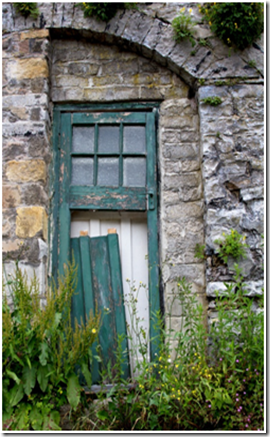




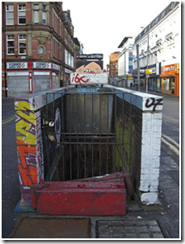






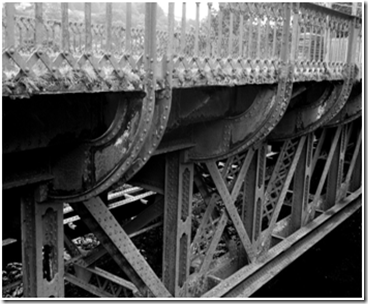



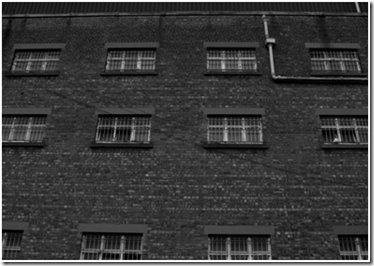
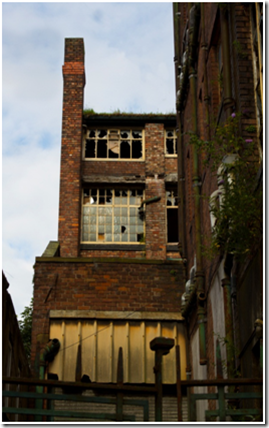




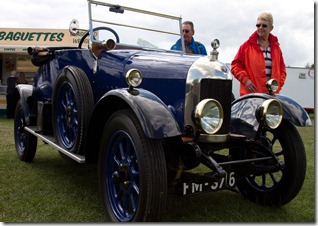





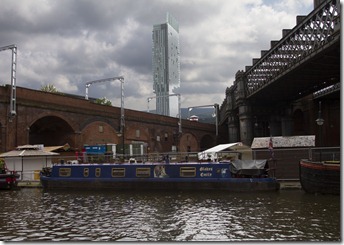


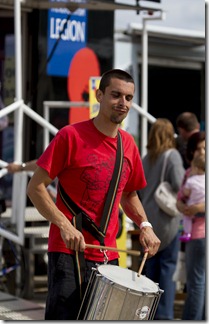


![clip_image002[1] clip_image002[1]](https://saltwickstudios.files.wordpress.com/2012/08/clip_image0021_thumb.jpg?w=222&h=345)
![clip_image004[1] clip_image004[1]](https://saltwickstudios.files.wordpress.com/2012/08/clip_image0041_thumb.jpg?w=224&h=396)
![clip_image006[1] clip_image006[1]](https://saltwickstudios.files.wordpress.com/2012/08/clip_image0061_thumb.jpg?w=229&h=356)
![clip_image008[1] clip_image008[1]](https://saltwickstudios.files.wordpress.com/2012/08/clip_image0081_thumb.jpg?w=229&h=356)
![clip_image010[1] clip_image010[1]](https://saltwickstudios.files.wordpress.com/2012/08/clip_image0101_thumb.jpg?w=358&h=284)
![clip_image012[1] clip_image012[1]](https://saltwickstudios.files.wordpress.com/2012/08/clip_image0121_thumb.jpg?w=226&h=351)
![clip_image014[1] clip_image014[1]](https://saltwickstudios.files.wordpress.com/2012/08/clip_image0141_thumb.jpg?w=360&h=256)
![clip_image016[1] clip_image016[1]](https://saltwickstudios.files.wordpress.com/2012/08/clip_image0161_thumb.jpg?w=243&h=377)




